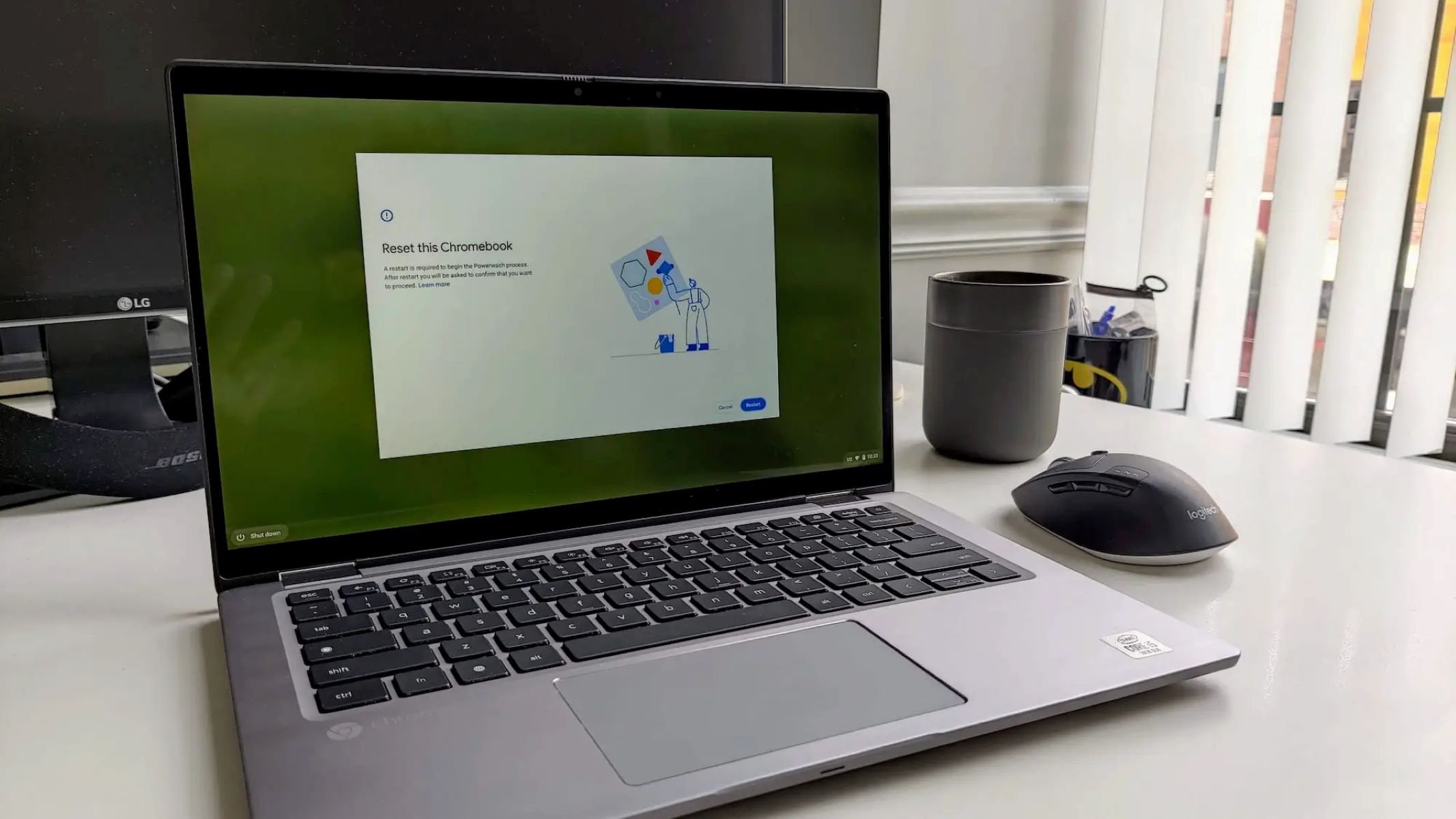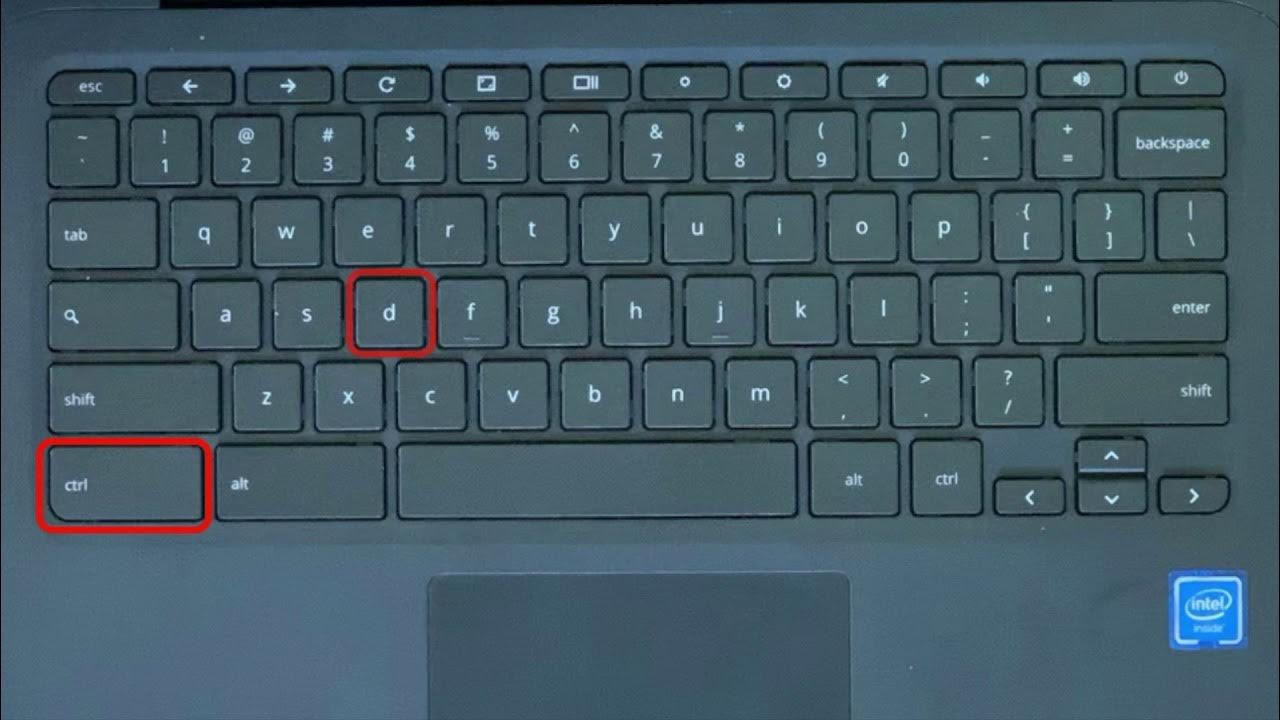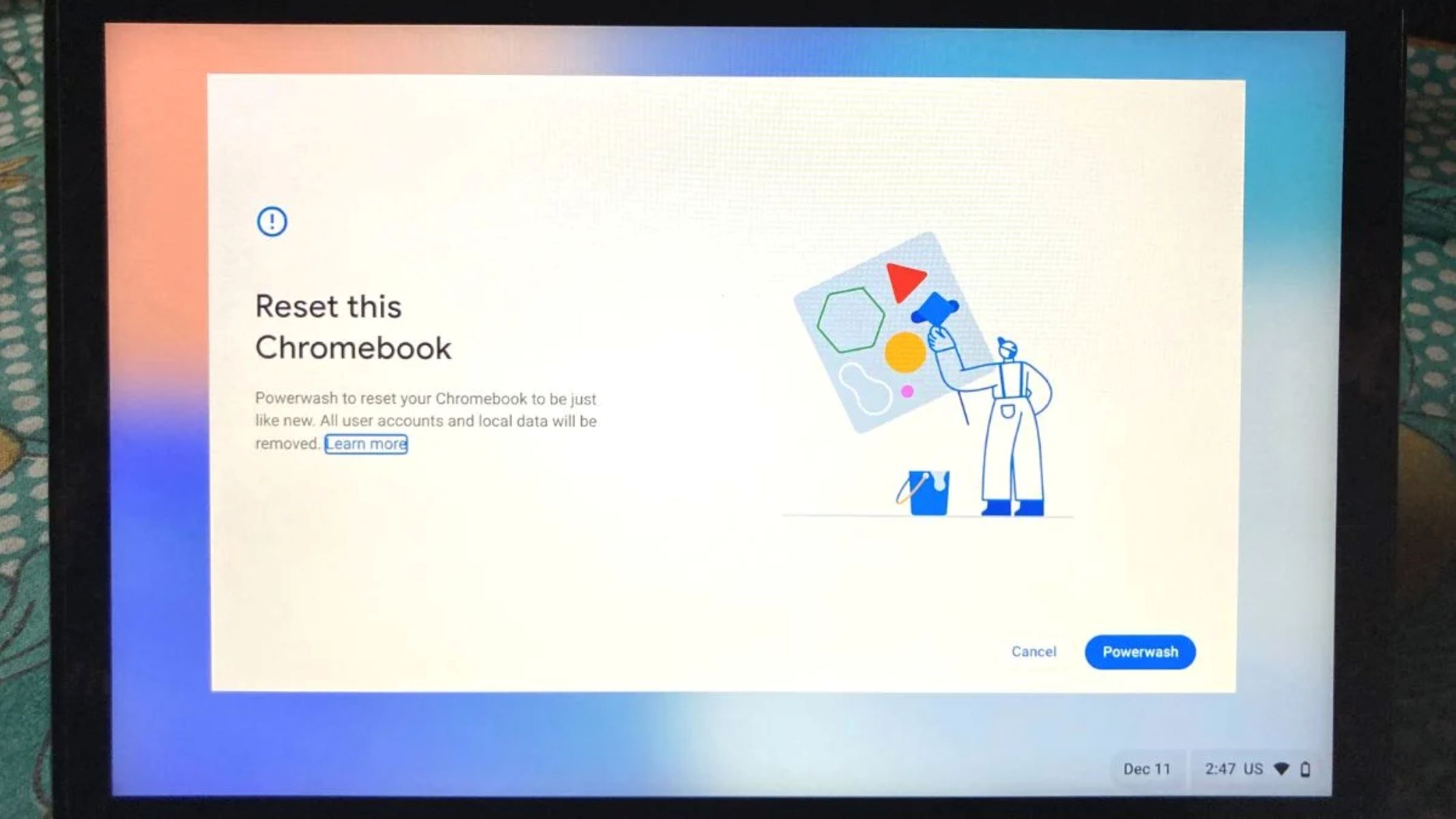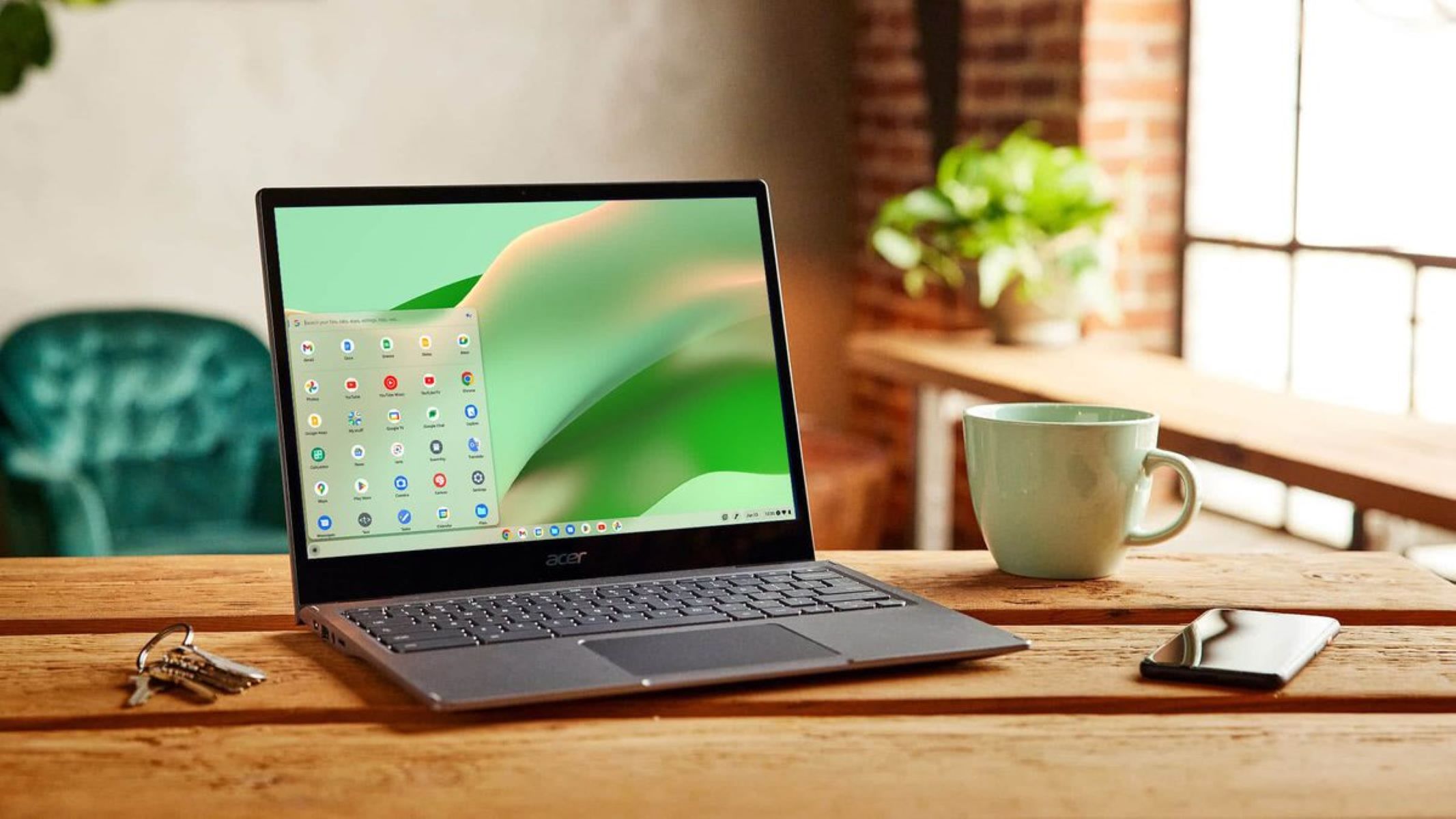Introduction
Welcome to our step-by-step guide on how to perform a hard reset on a Chromebook. Whether you’re experiencing technical issues, encountering software glitches, or simply want to restore your Chromebook to its factory settings, a hard reset can be an effective solution. This article will provide you with a detailed walkthrough on performing a hard reset on your Chromebook, so let’s dive in!
A Chromebook is a lightweight and fast laptop that runs on the Chrome OS, a web-based operating system developed by Google. These devices have gained popularity due to their affordability, long battery life, and seamless integration with Google applications. However, like any technological device, Chromebooks can occasionally encounter problems that impact their performance, such as freezing, crashing, or failing to start up.
Performing a hard reset can help resolve these issues by reinstating the device to its original state. It is important to note that a hard reset will erase all your data and restore the Chromebook to its factory settings. Therefore, make sure to back up any important files before proceeding.
In the following sections, we will provide you with a step-by-step guide on how to perform a hard reset on your Chromebook. Additionally, we will explore alternative methods for resetting your device and address some commonly asked questions. Let’s get started!
Why do a hard reset on a Chromebook?
There are several reasons why you might consider performing a hard reset on your Chromebook. Let’s explore some of the common scenarios where a hard reset can be beneficial:
- Resolve software issues: Over time, your Chromebook’s software can become cluttered with unnecessary files or corrupted data, leading to slow performance, freezes, or crashes. Performing a hard reset clears out these issues, allowing your Chromebook to start fresh and function optimally.
- Fix unresponsive or frozen system: If your Chromebook becomes unresponsive or freezes frequently, a hard reset can help resolve these issues. It forcefully restarts the device, clearing any temporary glitches that might be causing the problem.
- Recover from malware or virus infections: While Chromebooks are known for their strong security, they are not invulnerable to malware or virus infections. If you suspect that your Chromebook has been compromised, a hard reset can help remove any malicious software and restore your system’s integrity.
- Prepare for resale or donation: If you plan to sell or donate your Chromebook, performing a hard reset is essential to ensure that your personal data and information are completely wiped from the device. This includes clearing browsing history, logged-in accounts, and downloaded files.
- Troubleshoot persistent issues: If you have tried other troubleshooting methods and are still experiencing persistent issues with your Chromebook, a hard reset can be a last resort. It allows you to start anew and potentially resolve any underlying problems that were causing the persistent issues.
- Restore factory settings: Sometimes, you may simply want to restore your Chromebook to its original state. Performing a hard reset achieves this, removing any customizations or changes you have made to the system and returning it to the default settings.
Now that you understand the benefits of a hard reset on a Chromebook, let’s move on to the step-by-step guide on how to perform it.
Step-by-Step Guide on how to do a hard reset on a Chromebook
Performing a hard reset on a Chromebook is a straightforward process. Follow the steps below to reset your Chromebook to its factory settings:
- Back up your data: Before proceeding with a hard reset, it is crucial to back up any important files or documents that you want to keep. You can save them to an external storage device or upload them to a cloud storage service like Google Drive.
- Power off your Chromebook: Make sure your Chromebook is turned off. If it is not responding, hold down the power button until it shuts off completely.
- Enter recovery mode: Press and hold the Esc key, Refresh key (circular arrow), and the Power button simultaneously. You may need to use a paperclip or a similar object to press the small reset button on the bottom of the Chromebook if your model has one. Continue holding the keys until you see the recovery screen.
- Access the recovery screen: Once you enter recovery mode, you will see a screen with a yellow exclamation mark. Press Ctrl+D on your keyboard to access the Chrome OS recovery screen.
- Confirm the reset: On the Chrome OS recovery screen, you will see a message that confirms you are about to reset your Chromebook. Read the message carefully and select Continue to proceed with the reset.
- Wait for the process to complete: The hard reset process may take some time, as it involves reinstalling the Chrome OS. Follow the on-screen instructions and wait for the reset to finish. Your Chromebook will restart once the process is complete.
- Set up your Chromebook: After the reset is complete, your Chromebook will boot up to the initial setup screen. Follow the on-screen instructions to set up your Chromebook, create or log in to your Google account, and customize your preferences.
- Restore your data: Once you have completed the initial setup, you can restore your data from the backup you created in step one. This can include reinstalling applications, syncing your Google account, and transferring files back to your Chromebook.
That’s it! Follow these steps carefully, and you will be able to perform a hard reset on your Chromebook. If you encounter any issues or have questions during the process, consult the official Chromebook documentation or seek assistance from Google support.
Alternative methods for resetting a Chromebook
While a hard reset is the most effective way to reset a Chromebook to its factory settings, there are a few alternative methods you can try depending on the situation. Here are a few options:
- Powerwash: Powerwashing your Chromebook is a less drastic option compared to a hard reset. It allows you to restore your Chromebook to its original settings while keeping your personal data intact. To perform a Powerwash, go to the Settings menu, click on “Advanced,” then “Powerwash.” Follow the on-screen instructions to complete the process.
- Reinstall Chrome OS: If you are unable to access the recovery mode or encounter persistent issues even after a hard reset, you can try reinstalling the Chrome OS. Visit the official Chromebook support website and download the Chrome OS recovery tool on a separate computer. Follow the instructions to create a recovery USB drive and use it to reinstall the operating system on your Chromebook.
- Perform a browser reset: If you are experiencing issues with specific browser settings or extensions, performing a browser reset might help. Go to the Settings menu, click on “Advanced,” then “Reset settings.” This will reset your browser to its default configuration, resolving any conflicts or errors that might be causing problems.
- Contact manufacturer support: If none of the above methods work or if you are facing hardware-related issues, it is recommended to contact the manufacturer’s support. They can provide guidance tailored to your specific Chromebook model and help you troubleshoot and resolve any problems you are experiencing.
Remember, before trying any alternative methods, it is crucial to back up your data to avoid any potential loss. Additionally, some methods, such as Powerwash, will retain your personal data, but it is still a good practice to create a backup as a precaution.
Always refer to official documentation or seek assistance from the manufacturer or Google support to ensure you are following the correct procedure for your specific Chromebook model.
Frequently Asked Questions
Here are some commonly asked questions about hard resetting a Chromebook:
- Will a hard reset delete all my data?
- Can I recover my data after a hard reset?
- Do I need an internet connection to perform a hard reset?
- What is the difference between a hard reset and a factory reset?
- Will a hard reset fix all software issues?
- How often should I perform a hard reset on my Chromebook?
Yes, performing a hard reset on a Chromebook will erase all your data and return the device to its factory settings. It is important to back up your data beforehand to avoid losing any important files.
No, a hard reset permanently deletes your data from the Chromebook. It is crucial to back up your files before performing a hard reset if you want to preserve them.
No, you do not need an internet connection to perform a hard reset. However, an internet connection will be required when setting up your Chromebook again after the reset is complete.
A hard reset and a factory reset generally refer to the same process of restoring a device to its original settings. However, it is worth noting that the exact terminology may vary depending on the device manufacturer or operating system.
A hard reset can resolve many software-related issues on a Chromebook, such as freezing, crashing, or slow performance. However, if the problem is hardware-related, a hard reset may not solve it.
There is no set frequency for performing a hard reset on a Chromebook. It is typically done when you encounter persistent issues, want to restore the device to its original state, or prepare it for resale or donation.
If you have any additional questions or concerns about hard resetting your Chromebook, consult the official documentation provided by Google or reach out to the manufacturer’s support for assistance.
Conclusion
Performing a hard reset on a Chromebook can be a useful solution to various technical issues, software glitches, or the need to restore the device to its factory settings. It allows you to start fresh and resolve problems that may be hindering the performance of your Chromebook.
In this article, we provided a step-by-step guide on how to perform a hard reset on your Chromebook. We also explored alternative methods, such as Powerwash and reinstalling the Chrome OS, for different situations. Additionally, we addressed some frequently asked questions to help clarify any doubts or concerns you may have had.
Remember to back up your data before performing a hard reset to avoid losing important files. It is also essential to consult the official Chromebook documentation or seek assistance from the manufacturer’s support if you encounter any issues during the reset process.
We hope that this guide has been helpful in empowering you to perform a hard reset on your Chromebook. By following the steps outlined in this article, you can address software issues, restore your device’s functionality, and optimize its performance. Enjoy your refreshed Chromebook experience!

























